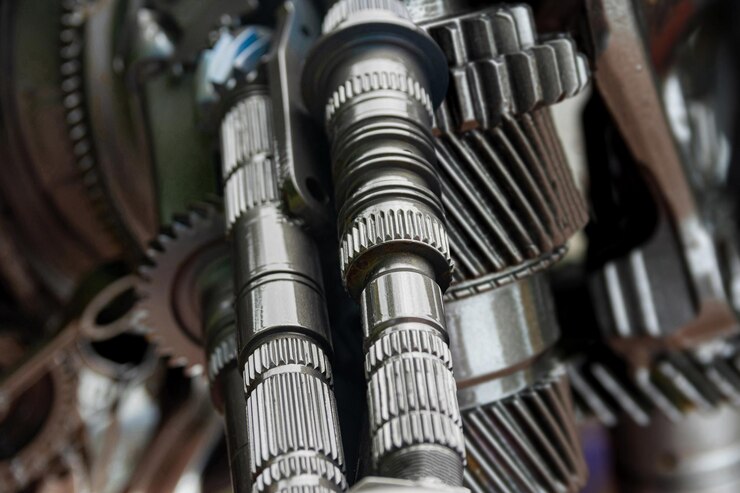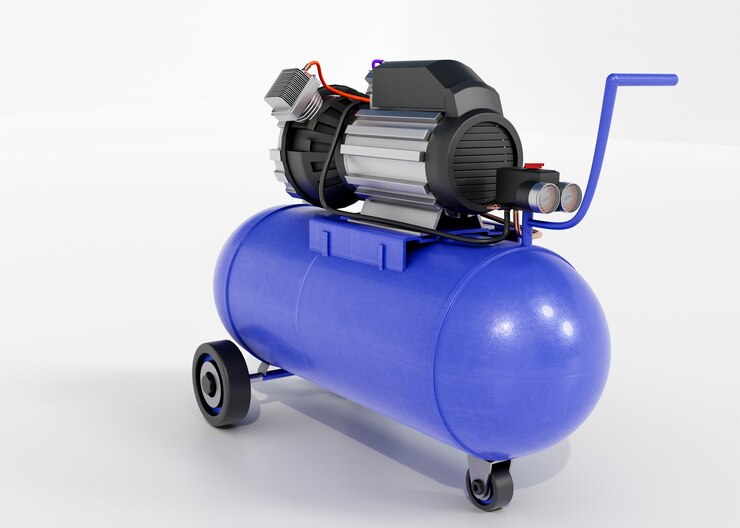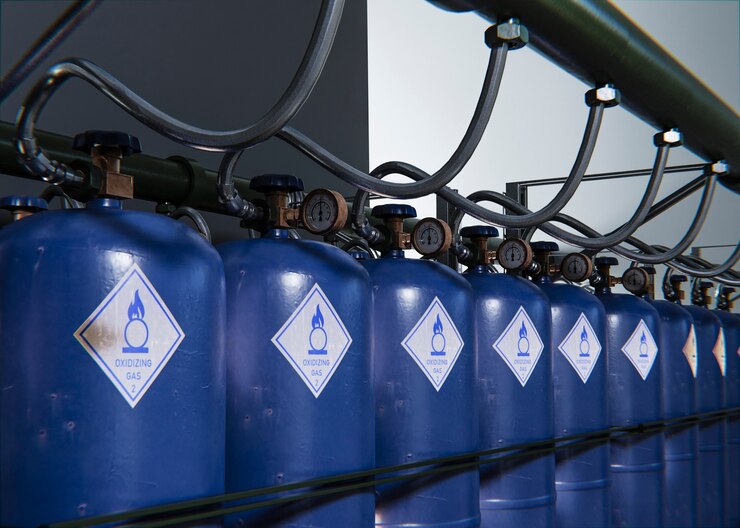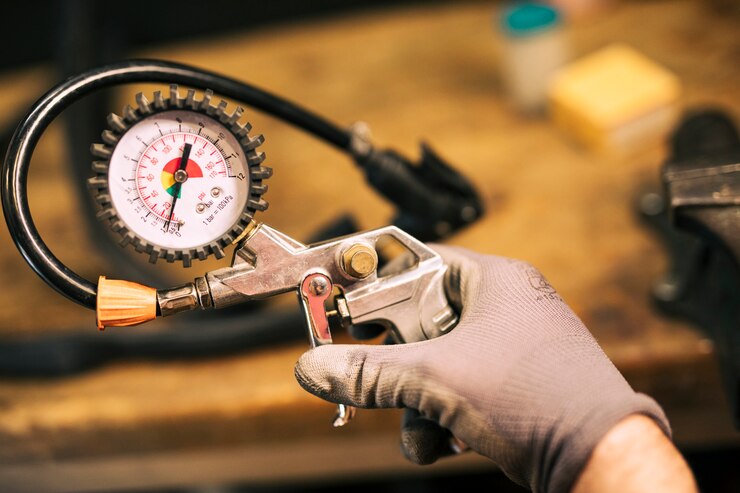The Importance Of Proper Lubrication For Compressor Piston Rod
Understanding the Compressor Piston Rod:
In the complex structure of the compressors, there is one element that can be considered to be a key part of it—the compressor piston rod. Whenever you are using a high-pressure compressor, industrial air compressor, or gas compressor the piston rod plays a crucial role in converting a rotary motion into a reciprocating motion required for compressing the gases. In this article, you will get detailed information about the compressor piston function, Significance, and measures required for maintenance.
What is a Compressor Piston Rod?
A compressor piston rod is among the critical working parts in reciprocating compressors. It couples the piston to the crankshaft so that the piston can travel linearly within the cylinder. This movement is important in compressing the air or gas that the compressor is expected to compact. In other words, the piston rod gives the force from the crankshaft to the piston for the compression to be effective.
What is the Mechanism of Variable Compression Piston Rods?
Adjustable Mechanism:
Another important subject is that variable compression piston rods can act as the unique adjuster of the compression ratio. This is usually done with the help of an adjustable arrangement that can change the size of the piston rod or shift the position of the piston in the cylinder.
• Hydraulic Adjustments: Other systems employ hydraulic means to vary the lengths of piston rods as required.
• Mechanical Adjustments: Some apply the use of mechanical linkages or gears to arrive at the variable compression trademark.
Variable Compression Ratios:
In this way, the compression ratio can be set in a manner that the engine can work effectively regardless of the conditions that are prevailing. For example:
• High Compression Ratio: For maximum power as in acceleration the compression ratio is raised to improve performance.
• Low Compression Ratio: The fuel efficiency issue is addressed by lowering the compression ratio which aids toward improved miles per gallon and lowered exhaust outputs.
Interfacing with Engine Management Systems:
A variable compression piston is always incorporated with sophisticated engine-controlling circuits. These systems include sensors and electronic controls which constantly vary the compression ratio according to parameters such as throttle position, engine speed, or load.

The Role of the Piston Rod in Different Compressors
Reciprocating Compressors:
The piston rod is an essential component in a reciprocating compressor which plays an important role in the functionality of the device. It joins the piston to the crankshaft to facilitate the to-and-fro movement that enables the compression of the gas. Since the piston rod itself functions in a high-pressure condition characteristically inherent to these compressors, the same must be strong as well as reliable.
Industrial Air Compressors:
For industrial air compressors, the piston rod wears a similar function but is all the more substantial. Compressors used in industries work under higher conditions, therefore the piston rod used in the industrial compressors must be stronger and more efficient than those used in other compressors. It is essential to take proper care of these rods for easy running of the compressor and to reduce on cost of repair.
Gas Compressors:
The piston rod in the gas compressors is in charge of handling the compression of gases at different pressures as well as temperatures. Since the overall conditions of these rods are quite stressful, the materials used for these rods are very durable. It is however important to perform frequent checks and sometimes services on the piston rod in other to continue meeting its function in the best way possible.
Key Components Related to the Piston Rod:
Understanding the piston rod involves knowing about other related components:
• Connecting Rod: This one holds the piston rod so that it can join with the crankshaft. It makes sure that the rotary movement from the crankshaft is transformed into to up and down motion suitable for the piston.
• Crankshaft: The crankshaft in the process translates the rotational movement of the engine into the columnar motion required for the compression.
• Cylinder: The cylinder contains the piston and isolates an area for the process of compression.
• Piston Ring: These rings sit on the top of the liner and their main function is to prevent the leakage of the gas and to allow its compression.
• Bearing: The bearings are provided for the support of the piston rod and that helps them to function smoothly and do not possess any drag.
• Seal and Gasket: Such elements help stop leakage and guarantee the sound condition of the compressor.
• Oil Pump: The oil pump has the function of lubricating the other moving parts including the piston rod thus minimizing friction and wear.
• Cooling System: Sustains the operational temperature of the working compressor in addition to the temperature of its parts, such as the piston rod.
• Lubrication System: Makes sure that all the parts of the product that are in constant contact with others should be lubricated to reduce friction and hence reduce wear.
Maintenance and Care for the Compressor Piston Rod
Regular Inspection:
Maintenance should take its course in checking the pistons rods for them to last longer. Search for such effects as scratchings or deformation on the surface area of the bar. Maintenance of vehicles is always important as identification of a problem at an initial stage helps to avoid serious complications and expenses on major repairs.
Lubrication:
The piston rod must be well lubricated to have the expected performance. The lubrication system differential should be examined to evaluate how the whole system works and whether the piston rod is properly lubricated or not.
Repair and Replacement:
In the course of its service delivery, piston rods may require repairing or replacement even with the best care. Some of the common problems are that it may have been exposed to contamination hence being damaged in the process or it is just worn out. Make sure that you avail yourself of a professional technician for the repair work as it concerns the compressor so that its quality is preserved.
Importance of Proper Rod Packing
Proper rod packing is of great importance so that the cylinder will have a smooth motion with as little friction as possible and maximum wall contact between the piston and cylinder walls.
- Preventing Leakage
The primary role of rod packing is to minimize the chances of fluid or compressed gas escaping through the cylinder. If the rod packing fails to work efficiently in the compressor the whole efficiency and performance of the compressor will be affected and it may lead to some operational problems.
- Maintaining Pressure
Rod packing prevents pressure from dropping within the stroke of the compression chamber. Proper sealing prevents air leakages so the compressor can be able to build up and maintain the required levels of pressure necessary for proper operation.
- Reducing Wear and Tear
Thus, rod packing contributes to the limiting of frictional forces that cause wear of the piston rod and other motor internal parts. It also helps in increasing the compressor’s durability and efficiency as a result enhances the compressor’s overall performance.
Conclusion:
The compressor piston rod is a crucial component that ensures the efficient operation of various types of compressors. From reciprocating compressors to industrial air compressors, understanding the role and maintenance of the piston rod can help you ensure that your compressor operates smoothly and efficiently. Regular inspection, proper lubrication, and timely repairs or replacements are key to maintaining the performance of this vital component.
For more information on compressor parts and maintenance, check out our detailed guides or contact us for LEiYAO.



